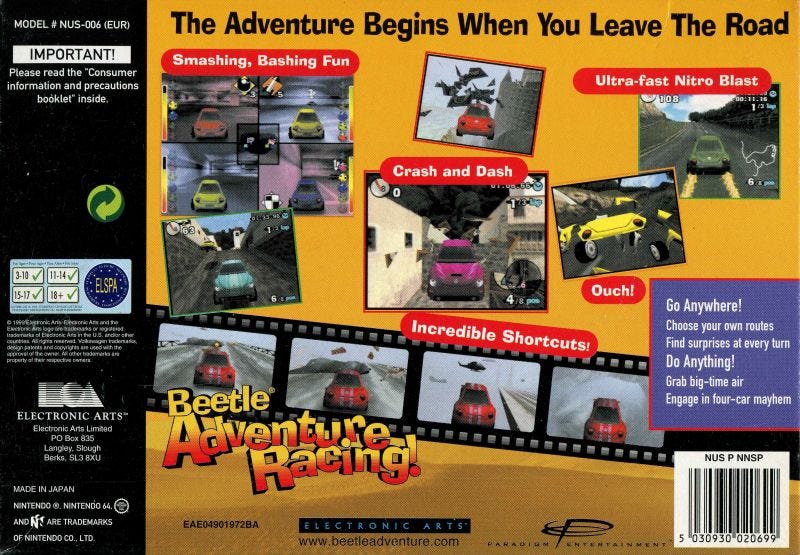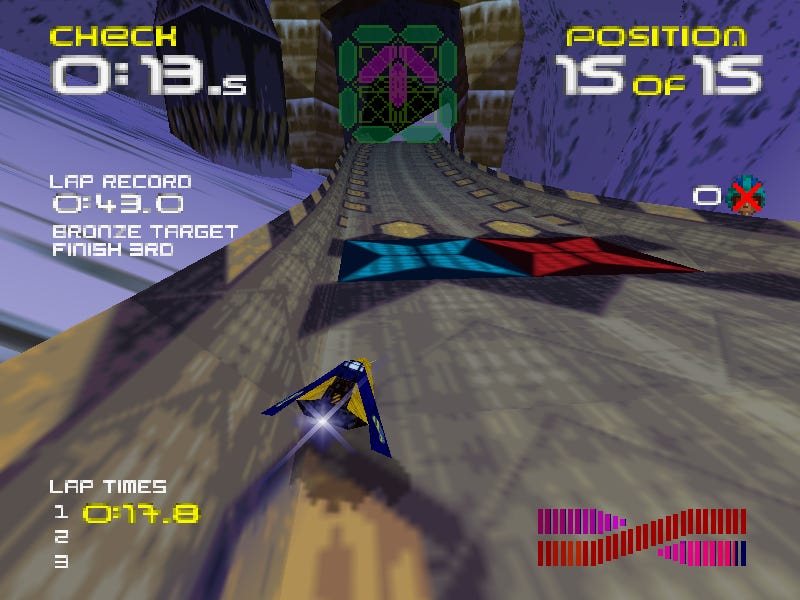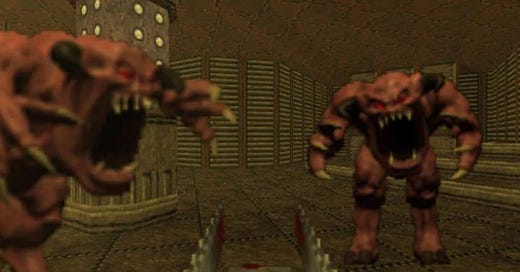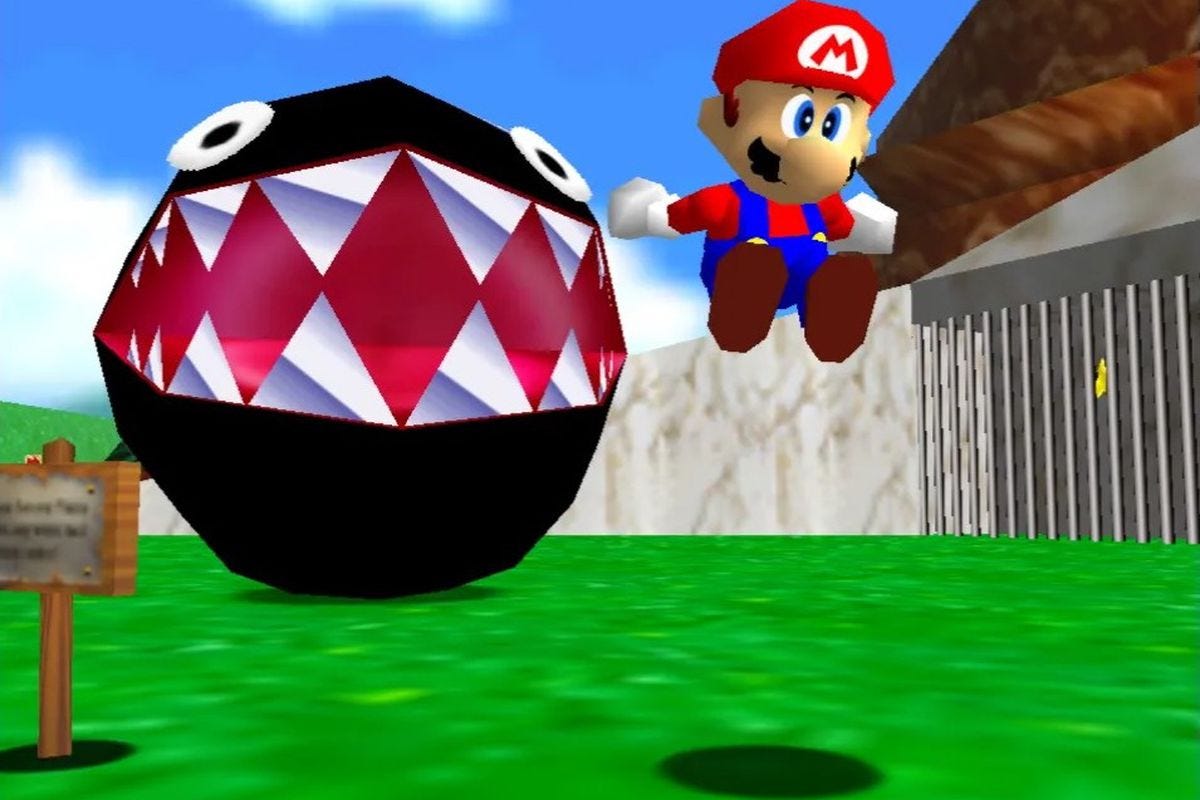25 years of the N64: The N64 library had holes, but not in these genres
Squaresoft and nearly everyone else took their JRPGs and ran to the Playstation, but the Nintendo 64 was absolutely loaded in plenty of other genres.
On September 29, 2021, the Nintendo 64 will turn 25 years old in North America. Throughout the month of September, I’ll be covering the console, its games, its innovations, and its legacy. Previous entries in this series can be found through this link.
Squaresoft taking Final Fantasy — and, well, everything else they did — off to Sony’s Playstation during the fifth generation of consoles was a serious blow to Nintendo. The Square and Nintendo relationship had been something special to that point, with the Super Nintendo receiving a number of tremendous JRPG titles, and the Super Famicom getting even more of them: the two companies even collaborated on the the excellent Super Mario RPG: Legend of the Seven Stars near the end of the SNES’ lifespan. And then, Square went to the more powerful Playstation, as did a number of other third-party developers that had helped to make the NES and SNES the resounding successes that they had been.
The N64 was not left with nothing, however. For one, Nintendo rose to the challenge of producing more and better first-party efforts — 10 of the games on my Nintendo top 101 were developed or published by Nintendo, and a few others would have qualified had the list been a little longer — and the Big N’s second-party developer Rareware went on their own critical and commercial run of success, too. Beyond just what Nintendo could directly dictate would be on the console, though, there were still plenty of third-party titles on the system worth playing. As was mentioned back when this whole month-long celebration began, the N64 might have had fewer than 400 games, but the percentage of those that were both worth playing and still hold up to this day is stunning. And much of that had to do with the N64 becoming the console for fans of genres that weren’t JRPGs.
You weren’t going to get a new Final Fantasy on the N64, nor would any of the new franchises Square or loads of other Japanese developers would debut during this era hit the system, but there was still plenty to enjoy across various genres. The most noteworthy, and the ones with maybe the most volume, too, are these three: racing, first-person shooters, and platformers. Let’s dig in.
Racing
Whatever racing you could conceive of in the mid-to-late 90s was represented on the Nintendo 64. Nintendo alone was responsible for not just Mario Kart, the system’s second-best selling game that proved, if nothing else, that people loved being able to race against three of their friends in their living room, but a number of other racing titles. The futuristic and high-octane F-Zero X. Water physics that to this day seem too advanced for the N64 in the jet ski racer, Wave Race 64. The first 3D entry in the Excitebike series, Excitebike 64, which was an arcade racer that somehow ended up being far more realistic than the on-purpose realistic dirt bike racers that were its peers. There was Ridge Racer 64, which, as has already been discussed, was the best arcade-style racer on the platform. And last, there was 1080 Snowboarding, which similarly came out on top within its genre and helped with not just the N64’s racing bonafides, but its sports ones, too.
The racing did not stop with Nintendo-published games, of course. Rareware’s Diddy Kong Racing is a superior racer to Mario Kart 64 even if the sales don’t reflect that, but then you’ve also got games like Probe Entertainment’s Extreme-G, which tried to answer the question of what would happen if you spliced Mario Kart and F-Zero together. The answer? High-speed futuristic racing bikes with rocket launchers and laser cannons attached to them. This was published by Acclaim, which, for all of the various issues surrounding that company and the quality of its games over the years, managed to put out a string of quality N64 titles, at least.

Beetle Adventure Racing does not have you racing insects, but instead, Volkswagens. The Volkswagen (New) Beetle released in 1998, so, a year later, Electronic Arts published a racing game for the N64 where the only vehicle was the Beetle. You could race them in different colors, sure, but the whole thing was Beetles all the way down. This should not have worked as anything more than a commercial, but it does work! The racing is distinct enough, with the focus being on lengthy courses and the kind of shortcut discovery and hidden power-up finds that come from multiple playthroughs. The only real complaint to make about it is that the games lacks vehicle variety, but you can’t say you did not know what you were getting into when you pick up a racing game where every car shown on the box is a Beetle.
Midway’s Top Gear series appeared on the N64 in three different variations: a pair of Top Gear Rally games, and Top Gear Overdrive. The Rally games feature on- and off-road driving, and the kind of championship modes that are pretty standard for the genre. Critics were a little split on how realistic the games could be, considering they were arcade-style racers featuring shortcuts and such, but that dose of realism was the kind of feature that added to the replayability of it all, since it took a little time to master its intricacies. Overdrive is the sequel to the Rally games, and came with high-resolution graphics if you had an Expansion Pak in your system, too. As you can imagine, since there were three of the things on the system, they were received and sold well.
And folks, there are more racing games than that, too. Wipeout 64, courtesy of Midway, remains to this day the only title from that series published on a Nintendo console, as Sony owned its developer, Psygnosis. IGN believed that it was actually the superior title to F-Zero X, which, not to get into whether that’s true or not, but the fact a major publication could put those words down in a review tells you that Wipeout 64 was a hell of an entry for the usually Sony-exclusive series.

You want an F-1-style racer? Try F-1 World Grand Prix. Want something with licensed cars, or the best approximation when a licensing deal couldn’t fall through? Roadsters has got you covered. Did you think the pod racing was the best part of Star Wars Episode 1: The Phantom Menace? Maybe Star Wars Episode 1: Racer is just what you’re looking for.
It’s not just that there were a lot of racers on the N64. It’s that there were an extraordinary number of good racers on the system, and plenty that describe far more adulation than that. The N64 was so successful for racing games that it even managed to pull two franchises that had been, to that point, Sony exclusives into its orbit, because there was going to be money in releasing titles there even if the install base was far smaller than that of the Playstation.
First-person shooters
DOOM-style shooters were all the rage, and continued to be well into the life cycle of the N64, but if you wanted to play not just those kinds of games, but also the next evolution of first-person shooters, well, the N64 was the system you wanted. It’s not that the Playstation and Sega Saturn lacked first-person shooters — there was a whole revolution going on across the industry at this point — but the N64 was the only one of the three systems that was designed with a control stick in mind from the start: combine that with the directional C buttons that could act as a proto-right stick of sorts, and the N64 was where console-based first-person shooters started to feel like the genre we would come to know it as during the twin-stick era of controllers.
GoldenEye 007, of course, deserves significant credit for diversifying the gameplay of first-person shooters, and its spiritual follow-up, Perfect Dark, remains a spectacular game and one of the best the genre has ever created, which I will once again remind you I will get to in full detail later on. There were plenty of others we can talk about now, though, like Turok: Dinosaur Hunter, which was developed by Iguana Entertainment, published by Acclaim, and would release early in the N64’s life. Turok was an N64 exclusive and system seller that wowed thanks to the 3D movement it allowed — that was not necessarily the norm for the genre at that time, not in a world dominated by DOOM-style games — and its graphical prowess. Turok would also receive a pair of sequels on the console: Turok 2: Seeds of Evil, which kept up the impressive graphics but added far more meat to the bone, and the multiplayer-focused Rage Wars.
Forsaken 64 is another Acclaim first-person shooter, and while this was not exclusive to the N64, it’s still noteworthy enough for what it does differently than first-person shooters both past and present. You’re flying around in a vehicle in Forsaken, but from a first-person view, and will basically contort yourself into a pretzel attempting to fly your way through tunnels and large rooms in search of the enemies within these stages. It is, like many N64 games, one of those that might take a minute to get used to controlling, but once you see the logic in the button placement and all of that, you understand why things are the way they are, and can get to blowing up all those baddies scattered across the stage while you find your way to the level’s exit.

The mentions of DOOM and games like DOOM are not meant to disparage those titles in any way, just so you know. DOOM kicks ass. And id Software allowed Midway to develop DOOM 64 as an exclusive for the Nintendo 64, as well, one that you can rightfully say is the most underrated DOOM. Hell, even though it is canonically DOOM 3, since it is a sequel to DOOM II, there is an entirely different DOOM game called DOOM 3. You can’t get much more underrated than being erased from existence despite being good.
DOOM 64 holds up well enough that it just last year received remastered ports for multiple systems, too, with the Switch, Playstation 4, Xbox One, and Windows platforms all receiving it. If you like the gameplay of DOOM and DOOM II, then DOOM 64 will also be right up your alley: no nostalgia necessary.
id Software’s other major shooter, Quake, also made multiple appearances on the N64. This, like DOOM 64, was developed by Midway, and unlike the Playstation version of Quake, which could not find a publisher for some reason, actually managed to be finished and released. Both systems would receive a port of the sequel, Quake II, however, with the Playstation’s focused on replicating the experience of the PC original, while the N64’s version had completely different levels and a different soundtrack. Multiplatform game development in the 90s is a lot different than what we know today.
Platformers
There weren’t many 2D platformers during the fifth generation of consoles, just generally speaking, but the Nintendo 64 had a handful of them that ranged from good to fantastic. Kirby 64: The Crystal Shards isn’t going to be mistaken for the best Kirby anytime soon, but it’s an enjoyable game that tried something a little different by letting you create new powers by combining them, and it’s 2.5D style holds up well. Yoshi’s Story was criticized as being too kiddy at the time, especially in comparison to its predecessor, Yoshi’s Island, but kids play video games, too, and the art style was as bright and colorful as anything Nintendo had done to that point.
On the more “fantastic” side of the scale are Goemon’s Great Adventure, developed and published by Konami, and Mischief Makers, which was developed by then-Sega stalwart Treasure and published outside of Japan by Nintendo. These are two titles that make you wonder what all the fuss about the move to fully 3D platformers was about, as side-scrollers still, very obviously, had much left to give us. At least the intervening years have righted this wrong and blessed us with a slew of modern day side-scrolling platformers.
That’s not to say that there was something wrong with the 3D platformers being developed for the Nintendo 64 and other fifth generation consoles. Nintendo had plenty of success with their own titles in this realm, like with Super Mario 64, which certainly helped inspire the further development of this budding genre, or with Rare’s Banjo-Kazooie games, both of which were published by Nintendo. Rareware themselves would publish Conker’s Bad Fur Day, which was odd in its aggressively adult content both for something appearing on a Nintendo console and for the genre in general.
There was the physics-focused Glover from Hasbro Interactive, which sadly did not get a sequel because someone made a serious financial whoopsie that undid the commercial success of the original. There was Hudson’s transition of Bomberman from an arena-based action game to a 3D platformer, even before they decided to let the titular Bomberman have a dedicated jump button. And before Goemon’s Great Adventure, there was Konami’s shift of that traditionally 2D series to 3D for Mystical Ninja Starring Goemon.
Ubisoft’s Rayman 2: The Great Escape was not an N64 exclusive, but it did appear on the system in a striking green cartridge that’s easy to pick out on a shelf, despite the N64’s greatest flaw of not labeling the top of its games. More underrated but absolutely worth your time is another 3D platformer from Ubisoft, called Rocket: Robot on Wheels. This game was developed by Sucker Punch before they were tied to Sony, and, as we’ll discuss later on this month, got so much right about 3D platformers at a time when the genre was really still finding itself and trying to sort out how to be less inherently aggravating.
Everyone was in on the 3D platformer game at the time, even Take-Two Interactive, which published Space Station Silicon Valley. Take-Two is a company you know from its Rockstar output, its sports games, and its more mature-oriented franchises like Max Payne and Borderlands, but even they could not resist the allure of publishing a 3D platformer on the console that helped propel the genre to the forefront of development.
The N64 certainly had plenty of success in other areas — while lacking in shoot-em-ups, it represented the arcade space well with on-rails shooters and more flight-oriented games like Star Wars: Rogue Squadron, and it wasn’t entirely bereft of JRPGs, just… mostly bereft. And, of course, the existence of not one but two classic Legend of Zelda games meant that the action-adventure space was healthy, too. Racing, first-person shooters, and platformers were really where the system thrived, though, with all three genres showing up to notable degrees early on in the N64’s life, helping to chart the direction the console and the developers working on it would take. It took grabbing a couple of franchises that had been exclusive to the Playstation, as well as persistent, high-quality third-party support from companies that don’t even exist in the present anymore to plug the holes the N64 library had, but it happened. And the system is still worth going back to and playing in the present because of it.
This newsletter is free for anyone to read, but if you’d like to support my ability to continue writing, you can become a Patreon supporter.




